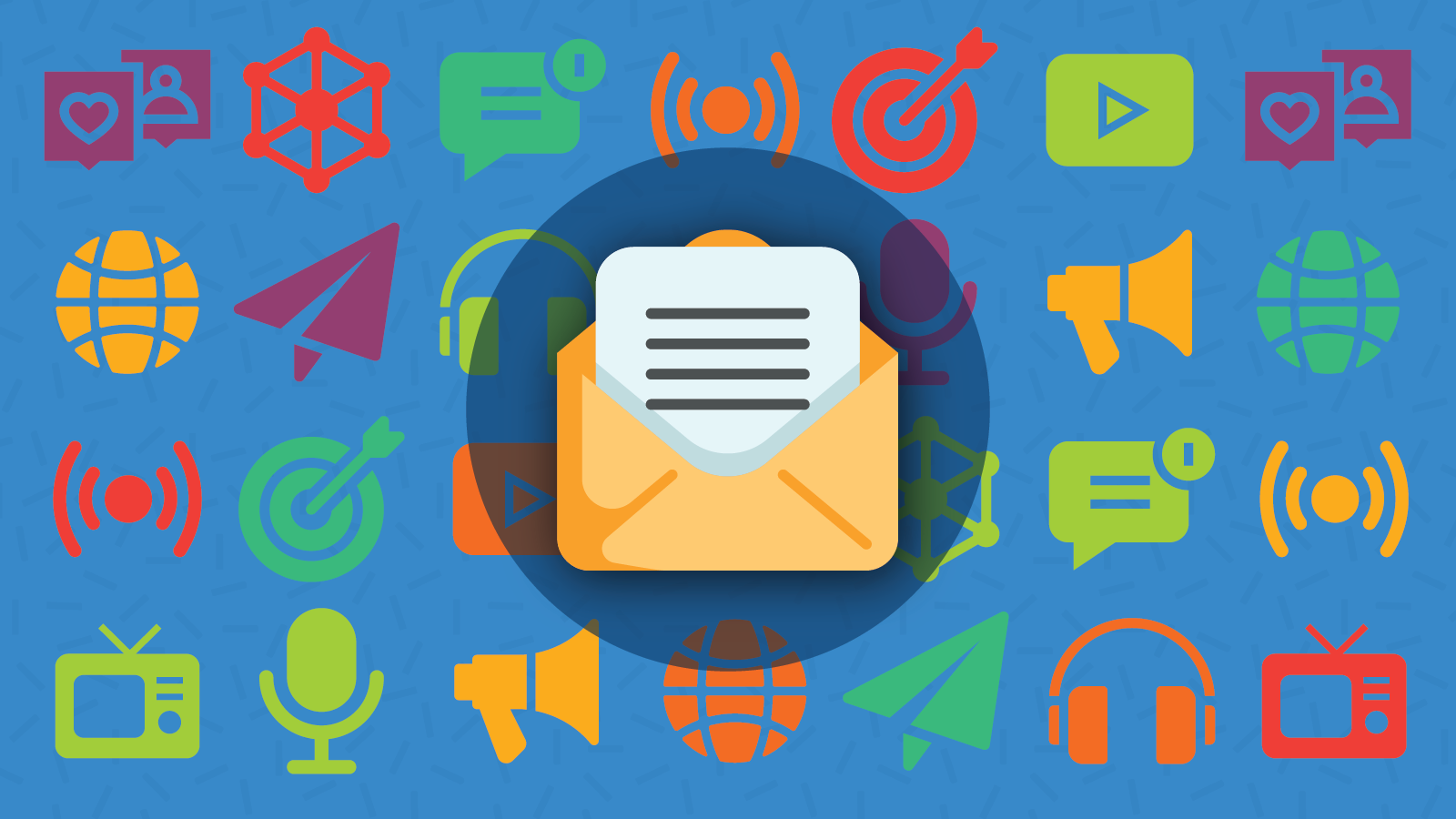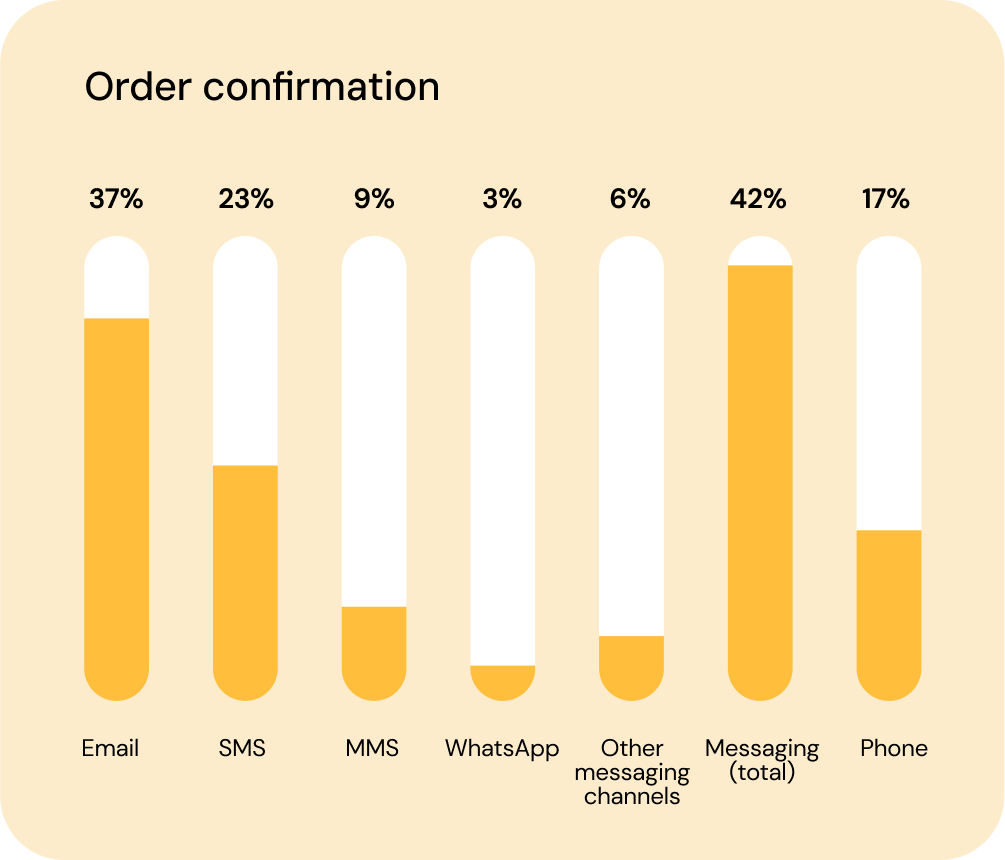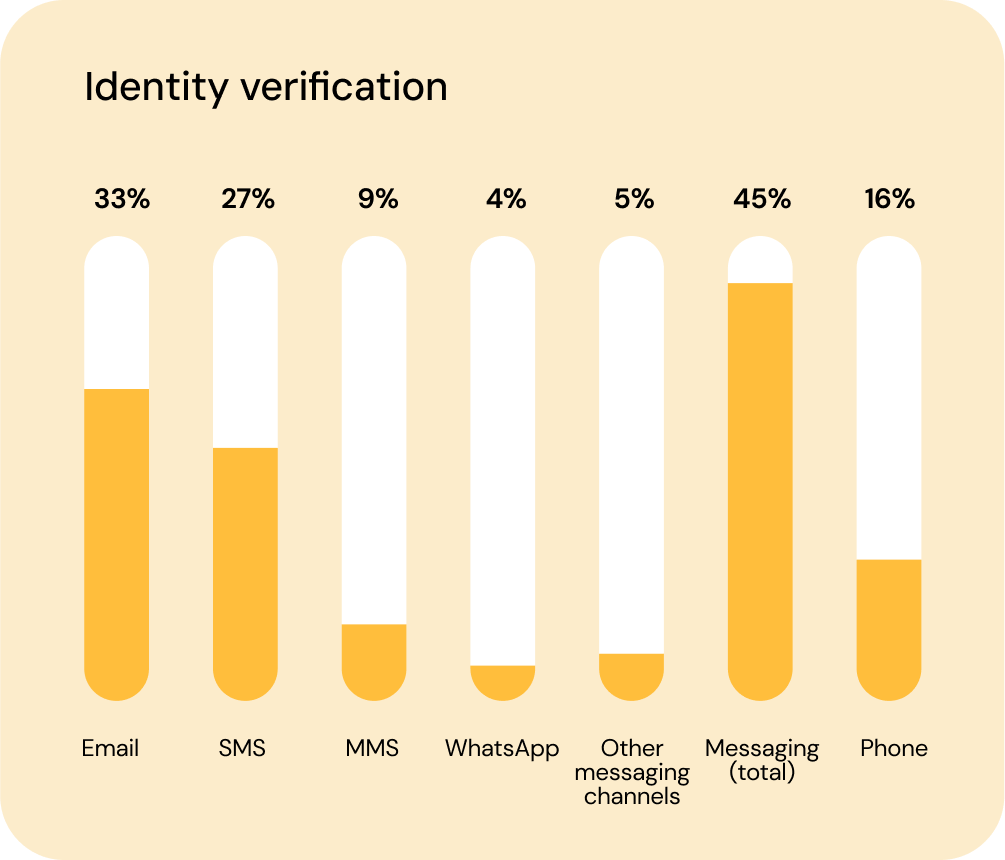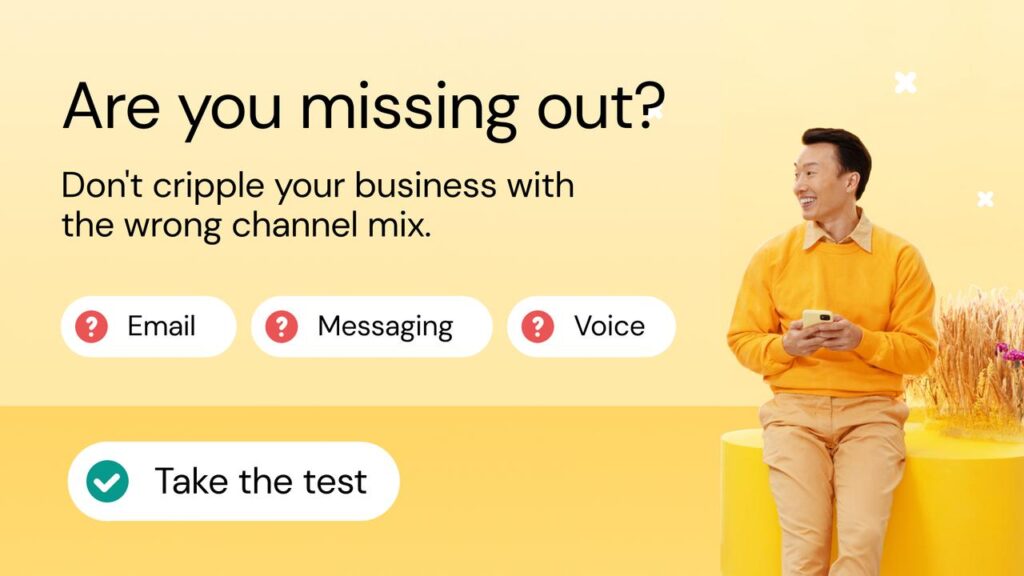Email Marketing
Email Marketing is Still Relevant – But It’s Also Got Company

Email Marketing

“Hey, Dad. What do you do on Gmail? Does Gmail send texts?” That’s what my 8-year-old son asked me the other day. Now, he’s a smart dude, but he wasn’t asking about an SMS to email gateway or how to send text messages from an email address.
My second grader simply wanted to know why the heck I use this thing called Gmail. To him, mobile messaging is the form of digital communication that’s most familiar.
The little guy actually already has his own Google account with a Gmail address. He also has older brothers, which means he’s begging me to let him use TikTok and Snapchat (not happening). Plus, he’s got his own device with Messenger Kids installed so he can chat with friends and family. Email just isn’t on his radar… at least not yet.
Things like this might make you wonder about the future of customer communications. Will email still be relevant in another 10 years? Or could other channels move in and take email’s place because of these darn kids?
Don’t start worrying about your email marketing career just yet. A recent survey from Sinch asked U.S. consumers about how they prefer to hear from brands, and email consistently came out on top. You can see all the results in the ungated report, The art and heart of meaningful customer connections.
Earlier this year, our friends at Sinch Mailgun also released some research showing that around 75% of consumers in the U.S., UK, France, Germany, and Spain want transactional and promotional messages delivered to their email inboxes. What’s interesting about these new findings from Sinch, however, is that they compare channel preferences for specific situations.

While Mailgun’s survey let respondents select all the channels they like using for customer communication, Sinch asked consumers to choose the single channel they most prefer.
Even though email was always the most popular option for transactional messages, other channels seem to be nipping at its heels. For example, 37% of consumers selected email as the top channel for receiving order confirmation messages. However, 23% chose SMS and another 9% chose MMS for order confirmations.

You’ll notice that when Sinch combined results from all mobile messaging channels, they surpassed email preferences by 5%. The survey revealed similar consumer preferences for delivery notifications and invoices/receipts.
SMS creeps a bit closer to email when it comes to receiving user verification messages for things like two-factor authentication (2FA). Speediness and convenience play a role here. SMS messages are delivered almost instantly. Even when people are already on a desktop device, it can be much easier to check your smartphone than navigate to your email inbox for those digits.
That’s likely why 27% of consumers chose SMS for receiving verification codes while around one-third preferred email. For the verification messages question, 45% of U.S. consumers would choose a mobile messaging channel.

The takeaway here? Transactional emails are unsung heroes of the customer experience, but they aren’t the only way to deliver information to customers. Email is still a relevant way to distribute transactional messages. Yet it’s wise to consider the benefits of other channels as well as the preferences of a considerably large group of consumers.
Promotional emails are a part of consumers’ daily lives. Most of us even have a dedicated tab for them in our inboxes. Mailgun found around half of consumers claim to check that promotions tab every day.
Receiving promotions via messaging channels is still a bit unfamiliar to some people. Many view their text message inbox as a place for peer to peer (P2P) communication with personal contacts. That viewpoint, however, is likely changing.
After becoming a paying customer, 39% of consumers surveyed would choose email as a place where they’d prefer receiving promotions from brands. When it comes to other channels, 21% chose SMS, 10% picked MMS, and a combined total of 40% of consumers would prefer a mobile messaging channel over email for promotional messaging.

So how should you take this? We’d say it’s an indication that consumer habits and opinions are quite varied. While email is effective for many customers, for others, reaching them on other channels may be their ideal customer communication experience.
Personalized promotions can occur on a variety of marketing channels. Consumer opinions on the best place for receiving personalized recommendations look similar to promotions in general. Email and all messaging channels combined tied at 39%.

While the email inbox is a very personal place, you could argue that text messaging is an even more personal communication channel. It’s also much easier to use messaging channels for conversational marketing, which includes two-way, automated communications and personalization.
SMS chatbots are one way that brands are accomplishing this. Chatbots can even serve as personalized shopping assistants, actively making suggestions and recommendations while answering questions about everything from shipping time to finding the right product fit. Sinch’s survey found that troubleshooting and answering questions were the most common reasons for interacting with a chatbot. However, 9% of consumers want chatbots to act as a personal shopping assistant. As interactions with AI become more common, this trend could become more of a consumer expectation.
Sinch’s Customer connections report also included a survey of U.S businesses. When asked about the channels they’re using to reach people, email stood out. Still, it’s clear that many businesses are thinking beyond the email inbox.
While 92% of businesses use email for customer communication, 73% use SMS and more than half use social messaging channels such as Facebook Messenger and Instagram.

So, most businesses still see value in email marketing, but it’s also obvious that the majority are at least adopting a multichannel communication strategy.
Even WhatsApp is a channel more than a third of U.S. businesses are using. This could be to reach customers in regions where the app is very popular. But statistics show WhatsApp’s popularity in the U.S. is growing.
There’s one more group with opinions on how to reach customers – thought leaders in the world of digital marketing. Partly due to challenges with reaching people via organic social media, it’s tough to find many people who’d diss the email channel.
Here are a few thoughts from names you’ll likely recognize: Rand Fishkin, Ann Handley, and Seth Godin.
While Rand Fishkin is known most for his influence on the SEO community and his audience research tool SparkToro, he’s well respected by marketers of all types. In a blog post proclaiming the undying power and reliability of email, he points out that average open rates have stayed around 20% or more for two decades. You can’t say the same about engagement on other channels.
If you’re not investing in an email list, you’re almost certainly missing out. That TikTok/Instagram/Threads/Twitter/LinkedIn following you’re building? Statistically it’s better to trade 1,000 new followers for a single email subscriber. That’s how lopsided the value-exchange is.

Everybody loves Everybody Writes author Ann Handley, founder of MarketingProfs. Ann is also well known for her email newsletter. Even though more than 90% of businesses use email to reach people, she believes the channel is still undervalued. Ann Handley explains more about the importance of email in the video below.
I think email, in particular, is so important. It is vastly undervalued by most companies… Email is the only place where people and not algorithms are in control.

Finally, there’s no one more revered than the pioneering sage of marketing, Seth Godin. He literally wrote the book on ethical email marketing practices in 1999 with Permission Marketing.
A few years ago, Seth was nice enough to give us his thoughts on the future of email. Truth be told… he’s not entirely optimistic, but he is realistic. In Seth’s opinion, this is not about consumer preferences. It’s about how we use (or abuse) the email channel as marketers.
Email’s an open API, and that will probably doom it in the long run. But if enough marketers stand up and make it better, not simply louder, there’s a shot…
Either you’re a spammer or you’re not. Either you’re regularly skirting the edges, trading lists, hustling people, writing click bait subject lines, evading policies and skulking around. OR, you’re being clear and open and delivering messages that are anticipated, personal and relevant.
The test is easy: If you didn’t send out your emails tomorrow, would people contact you to find out what happened?

There’s no doubt that shifting consumer behaviors may prompt businesses to expand into other channels, and it’s true that Gen-Z uses email less than older consumers. There’s a good chance that will change as Gen-Z starts “adulting” more and email becomes more of a convenience and a necessity. But if anything kills email, it won’t be text messages, Slack, or teens using social media. It will be senders and email marketers who deliver the death blow.
Email remains relevant because it can still provide plenty of value, especially when hearing from brands. Unfortunately, the reason it’s so hard to “stand out in the inbox” is because email inboxes are so full of noise.
Here are a handful of ways we can all be better email marketers:
Of course, all these things are tough to accurately measure with opens and clicks, but the ROI is there. Email can be a channel that helps your brand earn trust and attention. First, however, we need to carry out our end of the bargain with consumers and deliver the value we promised them when they opted in.
As much as we love email, there’s no need to choose just one marketing and communication channel to rule them all. You’re more than an email geek. You excel at customer communications. So, it’s wise to diversify your skillset.
There are exciting things to come. That includes RCS business messaging (RBM), which will allow brands to deliver engaging, interactive, mobile experiences that even the best email developer could only dream of. On the other side of the spectrum, the speed and simplicity of transactional SMS could be an easy way to improve the customer experience.
Sinch is currently offering a free evaluation to help you uncover the gaps in your communication strategy. Take the assessment today and get a personalized report based on your industry and current communication mix.
